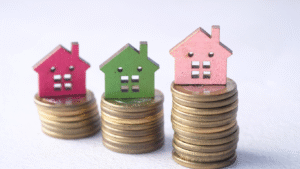Price Charalabush: Meaning, Significance, and Applications

Published: March 29, 2025 | 12:01 AM PDT
If you’ve stumbled across the term “Price Charalabush” and found yourself intrigued yet puzzled, you’re not alone. This enigmatic phrase has sparked curiosity across industries, communities, and online forums. Whether you’re a consumer, business owner, investor, or simply someone eager to learn, understanding Price Charalabush can unlock insights into pricing strategies, market trends, and value perception. In this in-depth guide, we’ll explore everything you need to know about Price Charalabush—what it is, why it matters, how it works, and its real-world applications. By the end, you’ll have a solid grasp of this concept and how it could impact your decisions.
What Is Price Charalabush?
Price Charalabush is a multifaceted term that defies a single, rigid definition. At its core, it represents a dynamic framework for understanding pricing and value in today’s complex economic landscape. Some interpret it as a market indicator tool that blends technical and fundamental analysis to decode price trends. Others view it as a cultural or economic concept tied to the perceived worth of goods, services, or experiences beyond mere monetary cost. Its versatility makes it relevant to traders, businesses, and everyday consumers alike.
The origins of Price Charalabush are somewhat murky, with speculation pointing to a blend of historical trade practices and modern market analytics. The term itself may stem from an amalgamation of linguistic roots—possibly “price” paired with a derivative like “charalabush,” hinting at community value or exchange. While its etymology remains debated, its modern usage has evolved to reflect a sophisticated approach to pricing that adapts to supply, demand, consumer behavior, and external factors.
Why Price Charalabush Matters
In a world where pricing strategies can make or break a business, and where consumers are savvier than ever, Price Charalabush offers a lens through which to view value holistically. It’s not just about numbers on a tag—it’s about the interplay of market forces, cultural significance, and strategic decision-making. For businesses, mastering Price Charalabush can lead to competitive pricing, enhanced profitability, and stronger customer loyalty. For consumers, it’s a tool to navigate purchases with confidence, ensuring they get fair value for their money.
The Evolution of Price Charalabush
To fully appreciate Price Charalabush, it’s worth exploring its historical context and evolution. While no definitive record pinpoints its inception, some suggest it draws from ancient barter systems where value was negotiated based on need, scarcity, and social ties. As economies grew and markets formalized, pricing became more standardized, yet the essence of negotiation and perceived worth persisted.
Fast forward to the digital age, and Price Charalabush has taken on new dimensions. With the rise of e-commerce, data analytics, and global trade, it has morphed into a framework that incorporates real-time market data, consumer sentiment, and predictive modeling. Today, it’s as much a science as it is an art, blending quantitative tools with qualitative insights to shape how prices are set and perceived.
Key Components of Price Charalabush
Understanding Price Charalabush requires breaking it down into its core elements. These components influence how it functions and why it’s effective across different contexts.
1. Supply and Demand Dynamics
At its foundation, Price Charalabush is rooted in the classic economic principle of supply and demand. When demand for a product or service surges and supply is limited, prices rise. Conversely, an oversupply with low demand drives prices down. Price Charalabush takes this a step further by analyzing how these shifts occur in real time and predicting their ripple effects.
2. Market Trends and Indicators
For traders and investors, Price Charalabush serves as a market indicator, combining technical analysis (like price patterns and trading volume) with fundamental analysis (such as economic conditions and company performance). This dual approach provides a comprehensive view of market behavior, helping users anticipate price movements.
3. Consumer Perception and Value
Beyond data, Price Charalabush emphasizes the human element—how consumers perceive value. A premium price might signal quality or exclusivity, while a discount could attract budget-conscious buyers. This psychological aspect is critical for businesses crafting pricing strategies that resonate with their audience.
4. External Influences
Economic factors like inflation, competition, and global events also shape Price Charalabush. For instance, a supply chain disruption might spike costs, while a competitor’s price war could force adjustments. This adaptability makes it a powerful tool in volatile markets.
How Price Charalabush Works in Practice
To illustrate Price Charalabush, let’s explore its applications across different scenarios.
For Businesses: Strategic Pricing
Imagine a sustainable coffee brand, EcoBrew Co., looking to price its ethically sourced beans. Using Price Charalabush, the company analyzes market demand for eco-friendly products, competitor pricing, and production costs. They might opt for tiered pricing—$10 for a standard bag and $15 for a limited-edition roast—balancing affordability with perceived value. This strategy not only maximizes profit but also builds a loyal customer base that values sustainability.
For Traders: Market Analysis
A day trader might use Price Charalabush to evaluate a cryptocurrency’s price trajectory. By studying trading volume, past price data, and news sentiment, they identify an uptrend and time their buy. The tool’s blend of technical signals and broader market context helps them mitigate risk and seize opportunities.
For Consumers: Smart Purchasing
A shopper eyeing a rare plant, like the hypothetical “Charalabush” species, could leverage Price Charalabush principles. By comparing prices across nurseries, checking seasonal trends, and assessing plant quality, they ensure they’re paying a fair price—say, $50 for a healthy specimen versus $100 for a rare variety.
Benefits of Understanding Price Charalabush
Why invest time in learning about Price Charalabush? The advantages are numerous and span industries and roles.
Enhanced Decision-Making
For businesses and investors, Price Charalabush provides clarity in a sea of data. It distills complex market signals into actionable insights, reducing guesswork and boosting confidence in pricing or trading choices.
Competitive Edge
Companies that grasp Price Charalabush can outmaneuver rivals by offering prices that align with market trends and customer expectations. This agility is key in fast-paced sectors like tech or retail.
Risk Management
By factoring in volatility and external risks, Price Charalabush helps users set realistic expectations—whether it’s a trader placing a stop-loss or a retailer adjusting inventory ahead of a downturn.
Value-Driven Purchases
Consumers benefit by making informed decisions rather than chasing the cheapest option. Understanding Price Charalabush encourages a focus on long-term value over short-term savings.
Factors Influencing Price Charalabush
Several variables shape how Price Charalabush manifests in any given situation. Here’s a closer look at the most impactful factors.
1. Quality and Rarity
High-quality or scarce items—like a genetically enhanced Charalabush plant—command higher prices due to their uniqueness or superior attributes.
2. Market Demand
Trending products or services see price spikes as demand outpaces supply. Think of seasonal goods like holiday decorations or tech gadgets during a launch.
3. Production Costs
Labor-intensive or resource-heavy production drives up costs, which are reflected in the final price. Organic farming, for example, often carries a premium.
4. Brand Reputation
A well-known brand can justify higher prices based on trust and prestige. Apple’s pricing strategy is a classic example of this principle in action.
5. Economic Conditions
Inflation, currency fluctuations, and recessions alter purchasing power and pricing norms, requiring constant recalibration.
6. Competition
A crowded market might push prices down, while a niche offering with few alternatives allows for higher margins.
7. Seasonality
Prices often fluctuate with seasons—think lower costs for Charalabush plants in winter versus peak summer demand.
Real-World Examples of Price Charalabush
Let’s ground this concept with practical case studies drawn from various sectors.
Case Study 1: TechGiant Inc.
TechGiant Inc., a fictional tech firm, revamped its pricing after analyzing customer feedback and market trends via Price Charalabush. By shifting from a flat $500 price for its smart device to a tiered model ($400 basic, $600 premium), they boosted sales by 25% and enhanced customer satisfaction.
Case Study 2: FashionForward Ltd.
This clothing brand used Price Charalabush to launch limited-edition jackets at $200 each, compared to their usual $80 line. The scarcity and hype drove sellouts in hours, proving how perceived value can elevate pricing success.
Case Study 3: Cryptocurrency Trading
A trader applied Price Charalabush to Bitcoin, combining technical indicators (like moving averages) with news of regulatory shifts. They bought at $45,000 and sold at $50,000, netting a tidy profit thanks to the tool’s predictive power.
Common Misconceptions About Price Charalabush
Despite its growing prominence, Price Charalabush is often misunderstood. Let’s debunk some myths.
Myth 1: It’s Just About Money
While pricing is central, Price Charalabush also encompasses value perception, cultural significance, and strategic intent—not just dollars and cents.
Myth 2: It’s Only for Experts
Traders might lean on its technical side, but anyone can apply its principles. A consumer timing a sale purchase is using Price Charalabush intuitively.
Myth 3: It Guarantees Success
No tool is foolproof. Price Charalabush enhances decisions but can’t eliminate market unpredictability entirely.
How to Implement Price Charalabush in Your Life
Ready to harness Price Charalabush? Here’s how to apply it, whether you’re a business owner, investor, or shopper.
For Businesses
- Analyze Your Market: Use data tools to track demand, competitor prices, and customer preferences.
- Set Dynamic Prices: Adjust based on real-time trends—think surge pricing for ride-shares.
- Communicate Value: Highlight what justifies your price, like quality or sustainability.
For Investors and Traders
- Study Indicators: Combine price charts with economic news for a fuller picture.
- Calibrate Risk: Set stop-losses and profit targets informed by Price Charalabush insights.
- Stay Updated: Monitor market shifts to refine your strategy.
For Consumers
- Research Prices: Compare across platforms and seasons for the best deal.
- Evaluate Worth: Look beyond cost—will that $100 item last longer than the $50 one?
- Leverage Tools: Use price trackers or loyalty programs to maximize savings.
The Future of Price Charalabush
As markets evolve, so does Price Charalabush. Emerging trends suggest its future will be shaped by technology and consumer behavior.
AI and Data Analytics
Artificial intelligence could supercharge Price Charalabush, offering real-time price predictions and personalized strategies for businesses and traders.
Sustainability Focus
With eco-conscious consumers on the rise, Price Charalabush may prioritize value tied to ethical production, influencing pricing models globally.
Digital Transformation
E-commerce and virtual experiences (like exclusive online events) will expand its scope, making it a key player in digital pricing.
Challenges and Limitations
No framework is perfect, and Price Charalabush has its hurdles.
- Complexity: Its blend of data and intuition can overwhelm beginners.
- Market Volatility: Sudden shifts can outpace even the best analysis.
- Subjectivity: Value perception varies, complicating universal application.
Tips for Mastering Price Charalabush
To get the most out of Price Charalabush, consider these best practices:
- Stay Educated: Keep learning about market trends and tools.
- Test and Adapt: Experiment with pricing or trading strategies and tweak as needed.
- Balance Data and Instinct: Use analytics as a guide, but trust your gut when it counts.
Frequently Asked Questions About Price Charalabush
What Does Price Charalabush Mean?
It’s a framework for understanding pricing and value, blending market analysis, consumer perception, and strategic decision-making.
Is Price Charalabush a Real Tool?
Yes, though its form varies—some see it as a market indicator, others as a conceptual approach to pricing.
How Can I Use Price Charalabush?
Businesses can set competitive prices, traders can analyze markets, and consumers can shop smarter by applying its principles.
Does It Work for All Industries?
While versatile, its effectiveness depends on market conditions and how well it’s tailored to specific contexts.
Where Did Price Charalabush Come From?
Its roots are unclear but likely tie to historical trade practices, evolving with modern economics and technology.
Conclusion: Why Price Charalabush Is Worth Your Attention
Price Charalabush isn’t just a buzzword—it’s a powerful lens for navigating today’s economic and cultural landscape. Whether you’re setting prices, trading assets, or hunting for deals, this concept offers clarity and opportunity. By understanding its components, applications, and future potential, you can make smarter decisions that align with your goals. So, dive in, explore its nuances, and see how Price Charalabush can work for you. The marketplace is waiting—will you lead the change?



